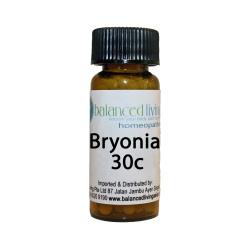Article reviewed and approved by Dr. Ibtissama Boukas, physician specializing in family medicine
Cervical spondylosis is a condition commonly encountered among those who suffer from neck pain. To treat it, doctors regularly prescribe medications, infiltrations or even surgeries in certain cases. Not ideal for those who prefer to avoid or minimize the use of medicated or invasive products.
In this article, we offer 11 natural treatments to relieve cervical osteoarthritis pain. With the doctor's approval, these alternatives could prove to be very effective in treating his condition and improving his quality of life.
Definition of Cervical Osteoarthritis
La cervical spine is made up of 7 superimposed bones (called vertebrae), numbered from C1 to C7. These vertebrae are connected together on the one hand by intervertebral discs articulating two vertebrae via their vertebral bodies.
Furthermore, each vertebrate is composed of articular facets called “zygapophysical joints” which connect 2 vertebrae via their posterior arch. Cartilage lines these joints, allowing movement between the vertebrae and avoiding excessive friction.
Like any joint, there can be degeneration over time. This is the phenomenon of osteoarthritis. Besides aging, this condition can be attributed to a history of cervical injury, repetitive strain injuries, unsuitable postures, malforations of the cervical spine, etc.
In the neck, osteoarthritis lesions mainly affect the lower cervical vertebrae (C4-C5, C5-C6, C6-C7) and are located at several levels:
- At the level of the discs (causing a compaction and a decrease in space between 2 vertebrae)
- At the facet joints
- At the level of the uncus (between the 3rd and 7th cervical vertebrae)
Bone deformities can then be created. They are called osteophytes, or parrot's beak for their characteristic shape.
Although it can be asymptomatic in some cases, cervical spondylosis can also cause symptoms such as:
- neck pain
- upper limb paresthesias
- upper limb weaknesses
- dizziness
- headache
- etc.
To learn more about cervical spondylosis (including symptoms and diagnosis), see the following article.
Alternative to medical treatment: 11 natural treatments
As mentioned, the medical approach includes the use of pharmacological products and invasive interventions to treat cervical spondylosis. Although effective, these solutions do not appeal to many patients who prefer to avoid drugs in general.
Here is a list of natural treatments for cervical osteoarthritis. It's crucial to get your doctor's approval before trying these alternative approaches:
1. Glucosamine and chondroitin
Glucosamine and chondroitin are supplements often used for osteoarthritis-like joint pain. Moreover, they are present naturally in the body, in the synovial fluid and the cartilage surrounding the joints.
- 🦵🏽 COMFORT, SOFTNESS AND FLEXIBILITY: Chondroitin, Glucosamine, MSM, Boswellia, Quercetin and Bamboo are among the active ingredients most studied for their positive impact on joint pain. Together, at the appropriate dosage, their effect is amplified in order to offer the best for your joints: they promote the reconstruction of cartilage, inhibit the enzyme responsible for its destruction and help reduce inflammation.
- 🎋 WHAT DO YOU GET WITH OUR GLUCOSAMINE CHONDROITIN SUPPLEMENT?: Our supplement contains 365 capsules, giving you a 1 year supply. Thanks to its 6 components with proven effects, chondroitin glucosamine complex Zenement really promotes the health of cartilage, reduces pain, relieves and protects joints. Bamboo adds value to the glucosamine supplement, it helps stimulate collagen synthesis and facilitates the reconstitution of cartilage, while having a remineralizing effect.
- 🔬 EXTERNAL LABORATORY TESTED: Our Glucosamine capsules have been tested by an accredited laboratory. We carry out regular analyzes in independent accredited laboratories to guarantee the best quality of the product. Contact us for more information, we will be happy to help you. Non-GMO ingredients and no unnecessary ingredients such as magnesium stearate, artificial colors or artificial flavors.
Last updated on 2025-06-23 / Affiliate links / Images from the Amazon Partners API
2. Vitamin D
There is some evidence indicating a link between vitamin D deficiency and chronic pain. With this in mind, some doctors offer to regulate the level of vitamin D in patients with chronic neck pain.
- IDEAL DAILY DOSE: 2000 IU vitamin D3 supports the optimal level of vitamin D3 in the body, without disturbing the delicate ratio of calcium and vitamin D3.
- EASY ABSORPTION, IN TABLET FORM: A higher increase in serum 25(OH)D level is obtained from vitamins D3 delivered in tablet form (cholecalciferol), compared to oil-based tablets.
- EASY TO SWALLOW: The tablets are rounded and only 6mm in diameter. Please note that the tablet size is slightly thicker for the new formula
Last updated on 2025-06-23 / Affiliate links / Images from the Amazon Partners API
3. Turmeric
This spice is mainly used in Indian curries, but is also recognized for its anti-inflammatory properties (the active compound of this product, curcumin, gives it its analgesic properties). It can be consumed in the form of herbal tea mixed with tea, or simply in capsule or liquid form.
- ●● SUPERIOR ORGANIC TURMERIC ●● Turmeric is used in Ayurvedic medicine to counter many ailments. It is curcuminoids that give turmeric its many medicinal qualities and its beautiful color. We use turmeric with a dose of 95% curcumin, having a high level of safety and bioavailability.
- ●● RECOGNIZED NATURAL BENEFITS ●● Tired? Joint problem? Weakened bones? Very rich in antioxidants, turmeric reduces digestive disorders: it supports the liver and biliary function, improves digestive comfort and improves the digestion of fats. A spice with multiple virtues, it helps the proper functioning of joints, bones and muscles, for an optimal anti-aging effect.
- ●● UNIQUE GINGER FORMULA ●● Organic ginger is an extract containing 1,5% gingerol. It is an essential plant in herbal medicine. Powerful antioxidant, it helps improve bone strength and joint mobility. It is also an immune system booster. Ideal in cases of injuries due to physical exertion or to prevent the decline in joint flexibility with age.
Last updated on 2025-06-23 / Affiliate links / Images from the Amazon Partners API
4. Capsaicin ointment
The famous Tiger Balm, you know? This balm widely used in Asia contains several ingredients, the most common of which are camphor, capsaicin and menthol (this is what gives it its characteristic smell and warmth). It is widely used for inflammatory, muscular and osteoarticular pain (and therefore regularly against neck pain).
- Red TIGER BALM helps reduce tension thanks to the action of massage For athletes, ideal before exercise thanks to its warming properties
- Its characteristic energizing and stimulating scent includes notes of cinnamon and camphor.
- BAUME DU TIGRE products do not contain animal fat – they contain, among other things, essential oils and ingredients of plant origin
Last updated on 2025-06-23 / Affiliate links / Images from the Amazon Partners API
No product found.
5. Bryonia alba
Bryonia is prepared from the white bryony, a climbing herbaceous plant native to Europe and Central Asia. Like many homeopathic products, Bryonia is taken in granules, pills, liquids, oral powders or ointments.

6. Arnica
Arnica is a plant whose flowers are used to treat various pains. It contains an active ingredient, helenalin, which gives it its anti-inflammatory and analgesic properties. It is applied as a gel, cream or pill. Side effects, although rare, can include skin irritation and redness (mainly when applied topically).
- STERIPAN ARNICA GEL CREAM: Steripan Arnica Gel Cream is a non-greasy, skin-friendly formula that absorbs quickly and immediately provides a feeling of freshness and soothing
- THE + STERIPAN: Tested under dermatological control. 96% ingredients of natural origin. Cardboard case 75% recycled materials.
- DIRECTIONS FOR USE: Apply to the area to be relieved, massaging until completely absorbed. Renew the application 2 to 3 times a day.
- MASSAGE OIL FOR ATHLETES: Used in massages to prepare muscles for exercise and facilitate recovery after sport, this oil recommended by masseurs-physiotherapists is dedicated to athletes.
- TARGETED ACTION: Offering incomparable glide, this Weleda organic Arnica Oil provides toning and relaxing effects during massage to treat fatigue and muscle stiffness naturally.
- THE VIRTUES OF ARNICA: Arnica Montana is a medicinal plant used for centuries for its soothing properties which relieve and reduce tension when used in massage.
Last updated on 2025-06-23 / Affiliate links / Images from the Amazon Partners API
7. Clay poultice
This is a fairly well-known grandmother's remedy. Here, clay is used for its so-called pain-relieving properties. Clay powder is mixed with water, creating a paste. This paste is then applied (sometimes previously heated in the oven) to the painful area, sometimes adding a pressure bandage.
- MULTI-USE ● Facial beauty mask | Hair mask | Gentle bath.
- NATURAL ● 100% natural clay | Sun dried | Subject to numerous controls.
- QUALITY ● ISO 9001 certified product | Product manufactured with respect for people and nature.
Last updated on 2025-06-23 / Affiliate links / Images from the Amazon Partners API
8. White Willow Bark
The bark of the white willow, a tree reaching up to 25 m in height, is traditionally used in China for its medicinal properties. Because its bark contains salycilic acid, it is believed to work against pain, joint and arthritic problems, among others.
- White willow (Salix alba) bark Mother Tincture concentrated extract 1:2,5. 100% Natural, without alcohol and without added sugars. Made in Italy.
- A NATURAL ALLY: White Willow food supplement in drops. 40 drops (2 ml) contain 800 mg of white willow (salicylin 6 mg). Glyceric macerate or pure fluid extract of white willow (Salix alba) bark in drops.
- NATURALMA – Natural habits: We respect and love nature. All our food supplements are therefore vegan and without artificial ingredients. We believe it is essential to guarantee quality and safety. This is why we choose our raw materials carefully and produce our products in Italy.
Last updated on 2025-06-23 / Affiliate links / Images from the Amazon Partners API
9. Cider vinegar
Le cider vinegar is a popular home remedy for many different ailments, including neck pain. Although there is no strong scientific evidence to support its use, many people swear by it. cider vinegar as an effective treatment.
There are several theories about how the cider vinegar can help relieve neck pain. One of them suggests that the acids contained in the cider vinegar can help eliminate the buildup of inflammation around the nerve.
Another theory suggests that the cider vinegar can help block pain signals from the nerve.
How to use apple cider vinegar for relief?
To use the cider vinegar for pain, mix two tablespoons of vinegar in a glass of water and drink it three times a day.
You can also apply a compress soaked in cider vinegar diluted on the painful area for fifteen minutes in a row. If you decide to try the cider vinegar for pain related to cervical osteoarthritis, be sure to use organic, unfiltered vinegar to get the most benefit.
10. Anti-inflammatory diet
Having a balanced diet is not only important for maintaining good health, but also for combat joint pain.
Indeed, an unbalanced diet leads us to nutritional deficiencies that can lead to muscle contractures. Moreover, the consumption of processed or high-sugar foods is known to be a real precursor to chronic inflammation, which is often linked to muscle pain.
To act against chronic inflammation and relieve its symptoms, it may be interesting to favor a anti-inflammatory diet
To learn more about the anti-inflammatory diet and benefit from easy-to-prepare recipes, see the following article.
11. Manual Therapy and Alternative Medicines
The benefits of manual therapy for treating cervical spondylosis should not be underestimated. Although massages and mobilizations (often carried out by physiotherapists and osteopaths) do not correct the cause of osteoarthritis, they are effective in relieving tension and normalizing joint range of motion.
Also, approaches such as acupuncture, suction cups, acupressure mat, electrotherapy or others would also relieve pain and desensitize the central nervous system
12. Adapted pillow
Obviously, a suitable pillow would improve the quality of sleep, which will have an impact on pain and long-term quality of life. Now, how to choose a good pillow when you suffer from cervical spondylosis?
Although the choice of pillow varies depending on the individual, an orthopedic memory foam pillow is generally recommended. To find out how this pillow can help you sleep better and relieve your symptoms, see the following article.
My name is Anas Boukas and I am a physiotherapist. My mission ? Helping people who are suffering before their pain worsens and becomes chronic. I am also of the opinion that an educated patient greatly increases their chances of recovery. This is why I created Healthforall Group, a network of medical sites, in association with several health professionals.
My journey:
Bachelor's and Master's degrees at the University of Montreal , Physiotherapist for CBI Health,
Physiotherapist for The International Physiotherapy Center










